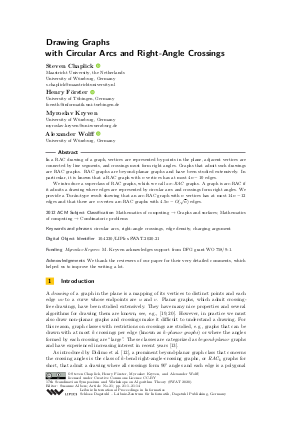LIPIcs.SWAT.2020.21.pdf
- Filesize: 0.93 MB
- 14 pages

 Creative Commons Attribution 3.0 Unported license
Creative Commons Attribution 3.0 Unported license



Feedback for Dagstuhl Publishing